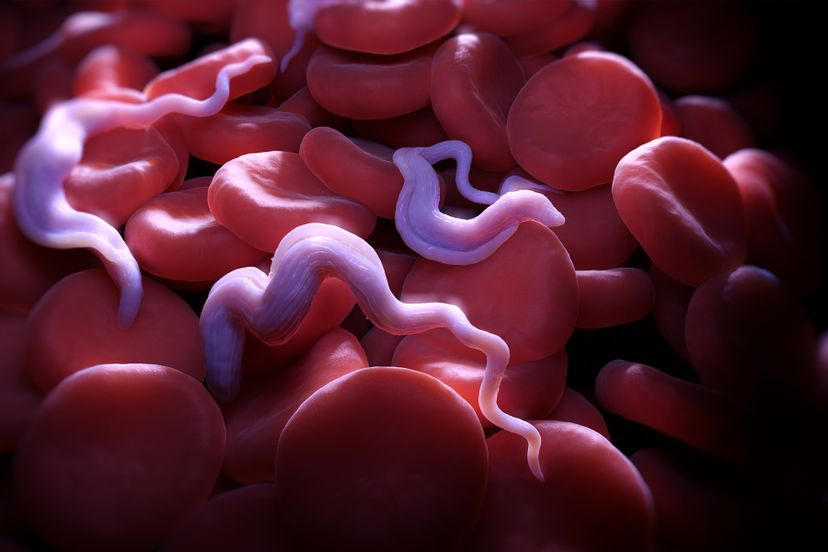
About This Quiz
Are you interested in staring up at the ceiling tonight in stone cold terror, convinced that a worm is slowly eating you from the inside? Have we got the quiz for you.While we might think of parasites as disease or illness-causing, some are quite benign.
Yup, those itchy bites are a great example of a common and pesky parasite.
Although some are bugs, it's not a class of parasite.
Advertisement
Protozoa are teeny tiny one-celled organisms.
Malaria is not a mosquito.
It is the biggest parasitic killer, globally.
Advertisement
These parasitic (and bacterial) diseases cause illness in 1 billion people.
The guinea worm has been on a steady decline due to safer drinking water and interventions.
Really, this quiz is not for the faint of heart.
Advertisement
Triatominae, also known as kissing bugs, spread Chagas disease, which causes swelling of the eyelids and can advance to cardiac symptoms.
Sleep cycles are disrupted when the Trypanosoma brucei parasite is introduced by the tsetse fly.
The parasite only causes symptoms in 30 percent of the people who have it, however.
Advertisement
Fasten your seatbelts: we're getting into worms.
Ten meters is so many, many meters. Cook your beef thoroughly, folks.
So the tapeworm becomes an adult within two months, but then it can live for years in your intestine. Gulp.
Advertisement
Only fish from freshwater, mind you.
Horrible. Awful. Bad bad bad.
The good thing about tapeworms is that they're generally treatable.
Advertisement
These worms are leaf-shaped.
That's right; that rash you got from the lake is parasitic.
Don't eat ants.
Advertisement
Hookworm eggs are in the feces of infected people.
It just gets worse and worse.
And you'll see why in a second. . .
Advertisement
Botfly, you are not welcome here.
But horrifying might apply too.
There may be a lot of tears involved if you have bedbugs though.
Advertisement
Unlike mosquitoes or fleas, bedbugs don't spread diseases to their hosts.
But don't forget the psychological affects of bedbugs -- lack of sleep, and total paranoia about your living conditions.
Sticking close to the roots, the lice like to lay eggs around the hairline and nape of the neck.
Advertisement